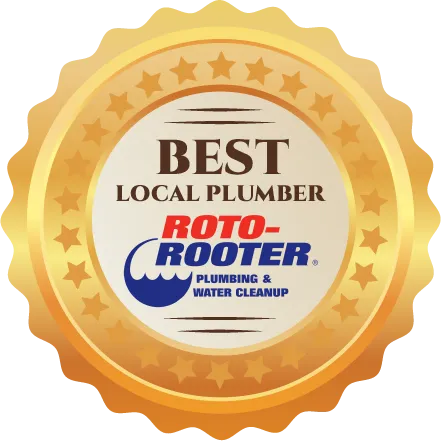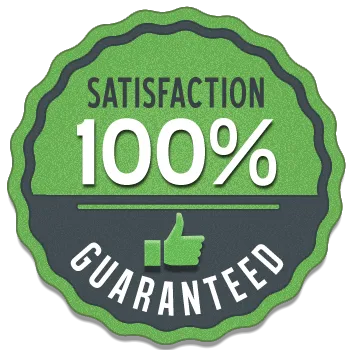Case Study: Preventing Burst Pipe Damage in St George Retail Stores
You’re likely aware of the challenges burst pipes can present in retail environments. In St. George, local businesses faced significant disruptions and costly repairs due to water damage, particularly during the winter months when temperatures can drop unexpectedly. This case study explores how these retailers tackled the issue head-on, implementing strategies that not only addressed immediate concerns but also set the stage for long-term solutions.
With the area’s older plumbing infrastructure, businesses had to contend with frequent maintenance issues. Many retailers adopted innovative measures such as installing advanced leak detection systems, which allowed them to monitor water usage in real time and identify potential issues before they escalated. Additionally, some stores invested in insulation for their pipes, a proactive approach to prevent freezing and bursting during colder periods.
By collaborating with local plumbers and consultants, retailers were able to share best practices and develop a community-wide response plan to mitigate the risk of water damage. These collective efforts not only enhanced individual business resilience but also fostered a sense of solidarity among St. George’s retail community.
As a result of these initiatives, local businesses experienced fewer disruptions and a more stable operational environment. The innovative strategies implemented served to change the retail landscape in St. George, making it a model for other regions facing similar challenges.
Understanding the Risks of Burst Pipes in Retail Environments
Burst pipes can cause significant damage in retail environments, particularly in regions prone to freezing temperatures during winter months. In such areas, pipes may be susceptible to freezing and bursting, which can lead to extensive water damage.
Water can seep into merchandise, damaging products and leading to costly replacements. It can ruin flooring, walls, and displays, creating an uninviting atmosphere for customers. Retailers may face unexpected repair costs, and the disruption could lead to lost sales while repairs are underway.
In coastal regions, the humidity can exacerbate the problem, leading to mold growth that poses health risks for both staff and customers. Regular maintenance and inspections are essential to prevent these risks.
Assessing Vulnerable Areas in St George Retail Stores
To effectively protect your St George retail store from potential water damage, it’s crucial to identify the areas most at risk for pipe bursts. In St George, the unique climate can contribute to plumbing challenges, particularly during the colder months when temperatures can drop unexpectedly.
Start by inspecting older plumbing systems, as they’re more prone to failure. Pay close attention to areas with high foot traffic, such as restrooms and break rooms, where pipes may experience increased wear and tear.
Look for signs of leaks or condensation around fixtures, as these can indicate weaknesses in the system. Don’t overlook hidden spaces like basements or ceilings, where pipes may be located and less frequently monitored.
Additionally, evaluate the insulation in areas that are subject to significant temperature fluctuations. In St George, where temperatures can vary greatly between seasons, frozen pipes are at a greater risk of bursting.
Implementing Preventative Measures
Once you’ve identified the vulnerable areas in your St George retail store, implementing preventative measures becomes a priority.
Start by regularly inspecting your plumbing system for leaks or corrosion, particularly considering the local climate that can lead to increased wear on pipes. Establish a routine maintenance schedule, ensuring that all pipes are checked and serviced accordingly.
Insulate exposed pipes, especially those in colder areas, to prevent freezing and potential bursts, which can be a common concern during the winter months.
Consider installing water leak detection systems that alert you to issues before they escalate, helping you address potential problems swiftly.
Educate your staff on water management practices, such as promptly reporting any signs of leaks, to foster a culture of proactive maintenance.
Finally, verify proper drainage around your store, especially during heavy rainfall, to minimize water accumulation that could lead to further complications.
Innovative Technologies for Pipe Maintenance
As you explore innovative technologies for pipe maintenance in urban areas, consider how smart solutions can address specific challenges such as aging infrastructure and fluctuating weather conditions.
In cities where heavy rainfall can lead to increased pressure on drainage systems, IoT sensors can be invaluable. These devices allow for real-time monitoring of pipe conditions, enabling detection of leaks and pressure changes before they escalate into significant problems. Automated alerts keep maintenance teams informed, facilitating timely interventions that can prevent costly damages.
In regions prone to corrosion due to local soil conditions, smart cameras equipped with AI can conduct thorough inspections of pipes, identifying issues like corrosion or blockages without requiring invasive measures. This non-disruptive approach is particularly beneficial in densely populated areas where minimizing disruption is essential.
Furthermore, predictive analytics play a crucial role in managing maintenance schedules. By analyzing historical data specific to your region, these tools can help foresee potential issues that are more likely to occur due to local environmental factors, allowing for proactive maintenance planning.
Community Collaboration for Water Damage Prevention
While you mightn’t think about it daily, community collaboration plays an essential role in preventing water damage from burst pipes, especially in areas prone to severe weather fluctuations.
In regions where winter temperatures dip significantly, the risk of pipes freezing and bursting increases. By working together, local businesses, residents, and city officials can share knowledge and resources, creating a stronger defense against potential disasters.
Organizing workshops or community meetings allows residents to learn about best practices for pipe maintenance and emergency response, particularly in neighborhoods where older infrastructure may be more susceptible to damage.
Establishing a network for reporting leaks or plumbing issues ensures that everyone stays informed and proactive, which is crucial in communities where rapid response can prevent extensive damage.
Advocating for local policies that prioritize infrastructure improvements is vital for areas facing frequent flooding or heavy rainfall, as these factors can exacerbate plumbing vulnerabilities.
When the community unites, you aren’t just protecting your business; you’re safeguarding the entire area from costly water damage and disruption, ensuring a resilient environment for everyone.
Regular Maintenance Protocols
Regular maintenance protocols can significantly reduce the risk of burst pipes in retail stores, especially in regions that experience harsh winters.
Start by scheduling regular inspections of your plumbing system to identify leaks, corrosion, and any signs of wear that may be exacerbated by freezing temperatures. It’s essential to monitor water pressure, as excessive pressure can lead to pipe failure, which is particularly concerning in areas where sudden temperature shifts can cause pipes to expand and contract.
In colder climates, make sure to insulate pipes located in unheated areas to prevent freezing. Additionally, regularly clean gutters and downspouts to ensure proper drainage away from your building, which can help mitigate the risk of ice dams forming and causing water backup.
Be mindful of seasonal changes, particularly the transition into winter, as these can impact your plumbing system.
Training Staff on Emergency Response
To effectively manage burst pipe emergencies in your area, it’s essential to train your staff on how to respond swiftly and efficiently. Given the unique climate and common plumbing issues in our region, ensuring your team is prepared can minimize damage and protect your store’s assets.
Here are some key training components to focus on:
- Identifying Symptoms: Teach staff to recognize early signs of a leak or burst pipe, such as unusual water pooling or changes in water pressure, which can be common in our local infrastructure.
- Emergency Procedures: Outline clear steps to take when an emergency occurs, including evacuation if necessary. This is particularly important in areas prone to flooding or where water can quickly accumulate.
- Shutting Off Water Supply: Train staff on locating and operating the main water shut-off valve. In our local context, it’s vital to understand how to quickly access these valves, as they can be located in different places depending on building types.
- Communication Protocols: Establish a chain of communication for reporting issues to management and calling for professional help. In our community, knowing the right local contacts for plumbing emergencies can expedite response times.
With proper training tailored to our local conditions, your staff will be ready to handle emergencies confidently, reducing potential damage and disruption.
Case Studies of Successful Prevention Strategies
Effective prevention strategies can significantly reduce the risk of burst pipes in retail stores, as highlighted by several case studies from different regions.
For example, a clothing retailer in Chicago faced unique challenges due to the city’s harsh winters. They implemented a thorough inspection schedule, which allowed them to identify early signs of wear in their plumbing. This proactive approach led to a notable 40% reduction in pipe-related incidents.
In another instance, a grocery chain in Miami dealt with the region’s unpredictable cold snaps. They invested in temperature sensors to monitor water lines, successfully preventing freezing conditions that could lead to burst pipes. As a result, they experienced zero burst pipes over two consecutive winters.
Future Considerations for Retail Water Management
As retailers in our region look to the future, embracing innovative water management practices will be essential in addressing local challenges such as aging infrastructure and seasonal droughts.
By staying proactive and adopting new technologies, you can safeguard your store and enhance overall efficiency. Here are some future considerations for effective water management in our area:
- Smart Sensors: Implement real-time monitoring systems to detect leaks before they escalate, especially in older buildings where plumbing may be more susceptible to issues.
- Water Recycling: Explore options for reusing water in non-potable applications such as landscape irrigation, which can significantly reduce overall consumption, particularly during dry months.
- Regular Inspections: Schedule routine checks to identify potential weak points in your plumbing systems, especially in areas prone to freezing temperatures that can lead to pipe bursts.
- Employee Training: Educate staff on water conservation techniques and emergency response strategies, ensuring everyone is prepared to act quickly in case of a water-related incident.
Conclusion
By embracing proactive maintenance and innovative technologies, retail stores in St. George have effectively reduced the risks associated with burst pipes, a significant challenge in an area prone to temperature fluctuations and seasonal storms. Regular inspections, real-time monitoring, and comprehensive staff training have not only shielded businesses from costly damages but also enhanced the overall customer experience. As you evaluate your operations, keep in mind that being prepared and fostering collaboration can greatly mitigate the risks of water-related incidents. Investing in these strategies will prove beneficial for your business in the long run, especially in a climate that can lead to unexpected plumbing issues.
Tags





